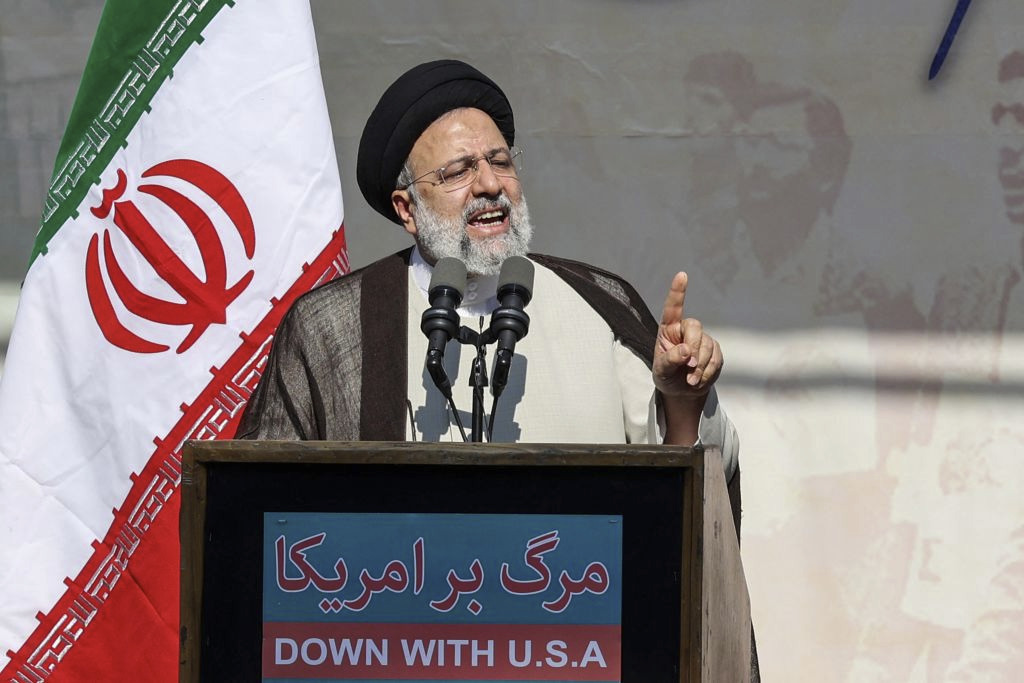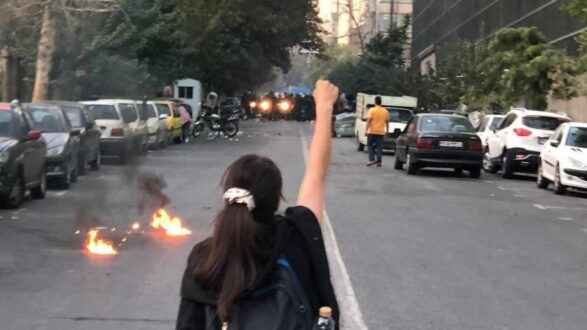gatestoneinstitute.org – The failure of the Khomeinist clique to develop a coherent narrative, let alone a strategy to deal with what looks like an existential crisis for the regime, has led to a chaotic response to the popular uprising. According to semi-official figures, between 300 and 500 protesters have been killed by the security forces and more than 15,000 jailed. By the time of this writing, four executions have also been officially reported.
But when you break down those figures, a curious pattern emerges.
Almost 60 percent of the deaths happened in just nine cities in two provinces: Sistan-Baluchistan and Kurdistan.
Despite the depth and breadth of the protests, just confirmed by widespread strikes in more than 30 cities, the Khomeinist establishment is still unable to understand what is really going on. Divided between its natural reflex to crush any dissent and its lack of self-confidence, it is spreading its paralysis throughout Iran’s political life, hoping to be saved by inertia.
After 10 years of negotiations to buy natural gas from Iran, China has decided to sign a 60-year deal with Qatar instead.
[T]he ayatollah’s abracadabra seems unlikely to force this genie back into the bottle.
Almost three months after the current popular uprising against the Islamic Republic started in Iran, three things are clear.
The first is that even if the uprising hits an interlude to recuperate, as is often the case with such movements, it is unlikely to simply fade away. It has mobilized energies that cannot be tamed with time, and raised such hopes and expectations that even the most hard-boiled cynics in power won’t be able to disregard.
Next, most of those who have mobilized those energies, that is to say the thousands of young men and women who risked all to openly challenge one of the most brutal regimes in contemporary history, while knowing what they want, don’t know how to translate their desiderata into the cold political reality of securing and using power.
The third thing that seems clear to me is that the Khomeinist establishment is struck by a paralysis in decision-making that prevents it from even suggesting a way out of the historic impasse it has led Iran into.
The first fact that hits an observer is the inability of the regime to develop a coherent narrative of what is happening.
One faction, let’s call them “turbaned ostriches,” insist that what is going on in almost every Iranian town and city is nothing but “sporadic disturbances” fomented by Israel, the US, France, Britain and a handful of secessionists hired by Turkish or Arab secret services.
According to the grandest of those ostriches, including Supreme Guide Ayatollah Ali Khamenei, what we see is “eghteshashat“, a word borrowed from Arabic which, in its purest etymological sense, means “injecting impurity” — such as adding copper to gold. In other words, Khomeinism is pure gold and those who challenge it are the “injectors of impurity.” It is not hard to see that such metaphysical claptrap cannot provide a basis for serious policy-making.
The trouble is that because Khomeinism, like Hitlerism and North Korean Kimism, is based on the cult of personality of the chief, it is hard for anyone else within the ruling clique to promote a radically different narrative.
In the first two weeks of the uprising, a number of officials and semi-official mullahs, among them President Ebrahim Raisi, tried to promote a “yes-but” narrative. Let’s call them “equivocating mules”, those who tacitly grant the legitimacy of at least some grievances but immediately refuse to budge from their position or suggest any way of addressing the grievances.
The third faction could be labelled “parrots gone mute”: grand and not so grand ayatollahs, generals, politicians, tycoons, celebrities, household philosophers, and hangers-on who have a name without anyone knowing why, who have always championed garrulity but have suddenly gone silent.
The failure of the Khomeinist clique to develop a coherent narrative, let alone a strategy to deal with what looks like an existential crisis for the regime, has led to a chaotic response to the popular uprising. According to semi-official figures, between 300 and 500 protesters have been killed by the security forces and more than 15,000 jailed. By the time of this writing, four executions have also been officially reported.
But when you break down those figures, a curious pattern emerges.
Almost 60 percent of the deaths happened in just nine cities in two provinces: Sistan-Baluchistan and Kurdistan.
Nearly half of those arrested were in 30 cities, out of Iran’s 900 towns and cities, in 11 out of 31 provinces, with Tehran, Mazandaran and Khorasan getting the biggest shares. When it came to the early release of those arrested, there were also curious disparities. In some places, for instance Bushehr, Qazvin, Sari and Ahvaz, many of those arrested were set free after a few days, perhaps because prisons were too full, as was admitted by the Mayor of Sari in Mazandaran. In at least a few dozen cases, families of those arrested bought their release with cash or by depositing property deeds to obtain bail.
In some cases, quick release came when it turned out that those arrested were children of senior members of the Khomeinist clique or celebrities too popular to be kept under lock and key for long.
The incoherence of the regime’s response was also reflected in the confusion about how and by whom those arrested should be prosecuted. The Khomeinist system has a number of different courts labelled “Islamic”, “civil” or “revolutionary” in addition to military and security tribunals and episodic courts set up by powerful clerics close to but not part of the government. More than a week after the tragic event, it is not yet clear which court issued the four death sentences in Baluchistan and the 17 death sentences still pending in Tehran and Kurdistan.
Despite the depth and breadth of the protests, just confirmed by widespread strikes in more than 30 cities, the Khomeinist establishment is still unable to understand what is really going on. Divided between its natural reflex to crush any dissent and its lack of self-confidence, it is spreading its paralysis throughout Iran’s political life, hoping to be saved by inertia.
The regime’s inability to develop a coherent strategy is also leading to paralysis in its foreign policy. The so-called “nuclear talks”, advertised by successive presidents in Tehran as the ultimate potion to cure all of Iran’s ailments, remain frozen, if not dead, because the participants prefer to wait and see the denouement of the current crisis.
Several visits by foreign leaders, including Pakistani Prime Minister Shahbaz Sharif and Venezuelan President Nicolas Maduro, have been “rescheduled” sine die. After 10 years of negotiations to buy natural gas from Iran, China has decided to sign a 60-year deal with Qatar instead. Talks to buy arms from Russia have also been frozen, despite the fact that the UN Security Council embargo on arm deals with Iran expired last October.
At a time that leaders of major industrial nations go to the four corners of the world to clinch energy deals, no one makes a stopover in Iran, which was once the world’s biggest exporter of oil. The planned week-long seminar to mark the 40th anniversary of the creation of the Hezbollah network under Ayatollah Khomeini has been cancelled and the 300 or so invited “brothers” from 20 countries were asked to stay home.
Khamenei has never hidden his admiration for North Korea’s “splendid isolation” and may still dream of adopting it as a model for his Islamic Republic. But that would require the end of the current national uprising one way or another. However, the ayatollah’s abracadabra seems unlikely to force this genie back into the bottle.
Amir Taheri was the executive editor-in-chief of the daily Kayhan in Iran from 1972 to 1979. He has worked at or written for innumerable publications, published eleven books, and has been a columnist for Asharq Al-Awsat since 1987.
This article was originally published by Asharq al-Awsat and is reprinted by kind permission of the author.
 Shabtabnews In this dark night, I have lost my way – Arise from a corner, oh you the star of guidance.
Shabtabnews In this dark night, I have lost my way – Arise from a corner, oh you the star of guidance.



